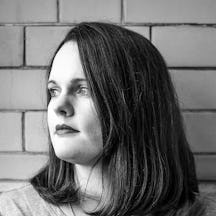Blythe House in west London was once one of the biggest museum storage facilities in the UK, home to millions of objects. It’s also where writer Laura Humphreys got her first museum job. She soon found she could navigate the building’s bewildering warren of rooms and corridors by nose alone, as almost every collection emitted its own unique scent. Recently sold and its vast stores emptied out, Laura reflects on Blythe’s spirit and her personal relationship with its architecture, objects and aromas.
There’s an enormous building in Hammersmith, west London, that thousands of people walk past each day without ever really noticing. It’s colossal and ornate but also concealed, surrounded tightly on all sides by other buildings.
This place was, until very recently, one of the biggest museum storage facilities in the UK, home to millions of objects belonging to the V&A, British Museum and Science Museum. Wellcome Collection had 120,000 items in the Science Museum’s long-term care there. It was also where hundreds of museum workers learned their trade, including me.
My first trip to Blythe House was for a Science Museum job interview. I was escorted through security, two turnstiles and two swipe-access doors, along a corridor called “the Chicken Run” which was somehow colder than outside, and then down a long, tiled hallway that smelled faintly of leather and… something.
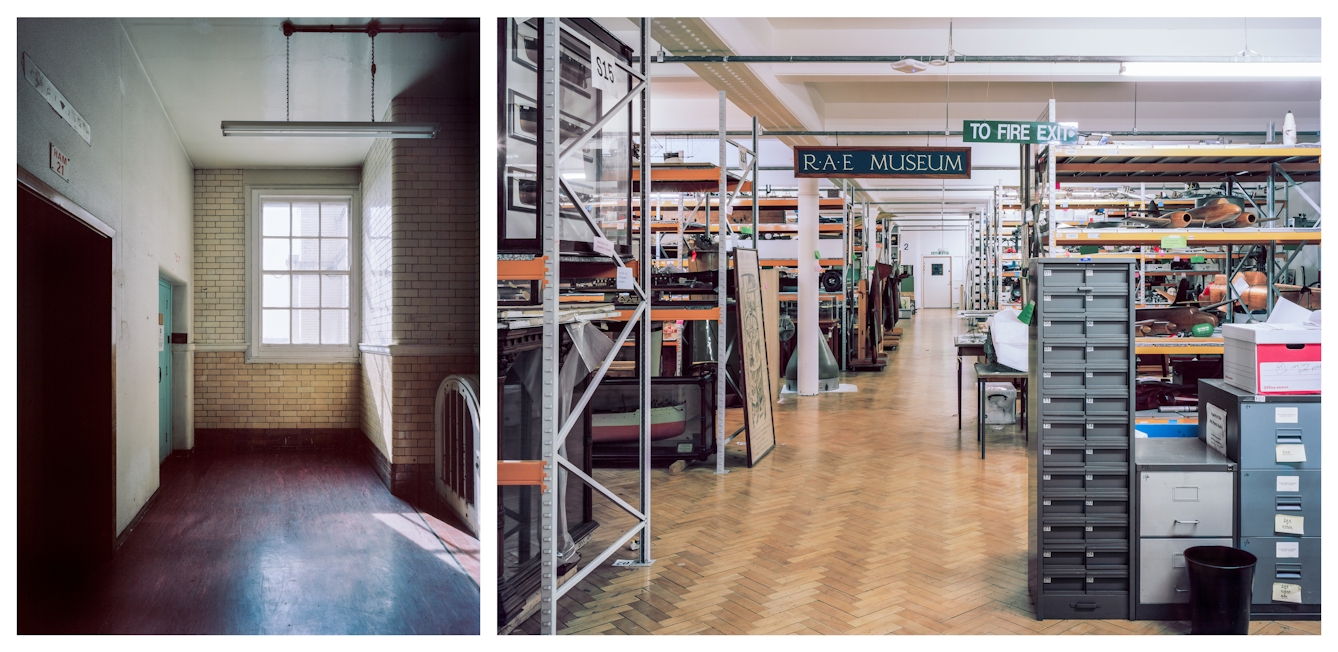
Left: North-west stairwell and lift lobby. 2020. Right: Room FF31, aerospace collections. Science Museum stores. 2019.
We continued through yet more locked doors and a grand stairwell, into a stark, off-white corridor with black-and-white stone flooring where the temperature dropped again. We turned a corner, passing endless doors with frosted-glass windows, until we reached a large wooden door at the end of the hall. At this point I had been in the building for five minutes, constantly moving. I was bewildered.
After the interview I was ushered out of the room and taken back the same route in reverse. The doors I passed gave up no secrets, but the corridor smells lingered all the way home.
Despite the air of disorientation I brought to that interview room, I got the job as a collections assistant – a role which involves moving museum collections around stores to where they are needed. Less than two weeks later, I found myself alone in the basement, surrounded by a collection labelled “Wellcome General”.
I was working with the Smoking Collection, an array of items collected by Henry Wellcome and his agents. Aside from two taxidermy ram’s heads with bejewelled snuff pots inlaid in their skulls, most of the collection was kept in closed cabinets. I was unsure why, until I opened one and was almost overwhelmed by the concentrated scent of sickly-sweet pipe tobacco. The smell clung to my hair like I had spent a week in the smoking room of a Victorian gentlemen’s club.
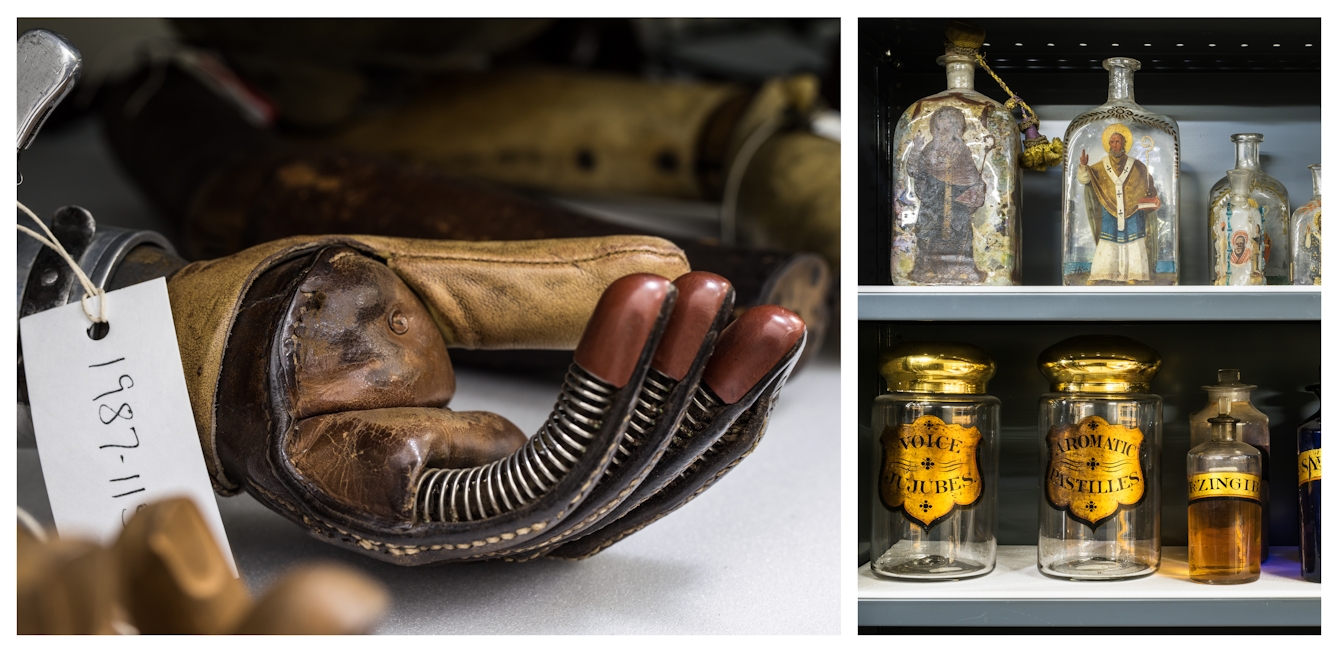
Left: Room G37B, prosthetics store. 2018. Right: Room B39/B40, glass bottles with painted saints alongside medicinal jars. 2018.
The hidden world of storage
Blythe House did not begin its life as a museum store. It opened in 1903 as the Post Office Savings Bank. At its height, over one third of the UK population held an account there. Despite its opulent Victorian design in red brick and stone, it was one of the first buildings in the country to have an early form of reinforced concrete lurking beneath.
The bank itself employed 4,000 people, a thousand of whom were women. They had a separate entrance to the men – in fact, the one hidden around the back where I entered for my interview a century later.
After some decades, the Post Office Savings Bank became the National Savings Bank, and left for Glasgow in the 1960s. After a decade or so of semi-abandonment, Blythe House was bought by the British government in 1979 to house stored museum collections. Over a million objects have been kept there. Some, once carefully placed, never leave their particular spot. Many, though, move often, going out on loan, to new exhibitions, or coming back after years on display. Blythe is a hive of movement, and yet also eerily still.
Well over 95 per cent of museum collections are in storage at any given time. That doesn’t mean they are forgotten or hidden away. You can request to see them at any point. And you should – if only to get a glimpse inside one of these repositories of human history that hide in plain sight.
Staffing the stores
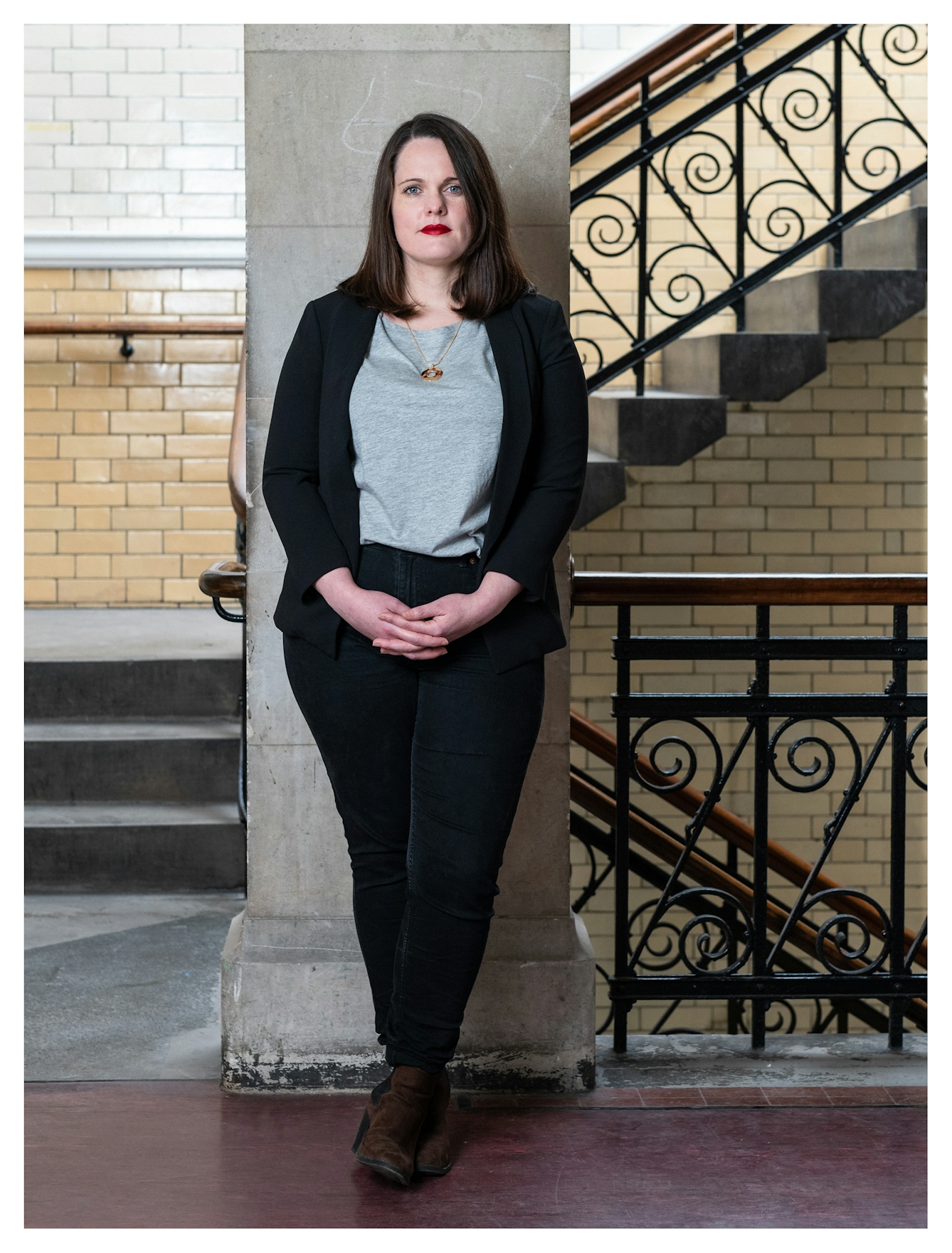
Laura Humphreys, Curatorial and Collections Engagement Manager. North-west stairwell. 2020.
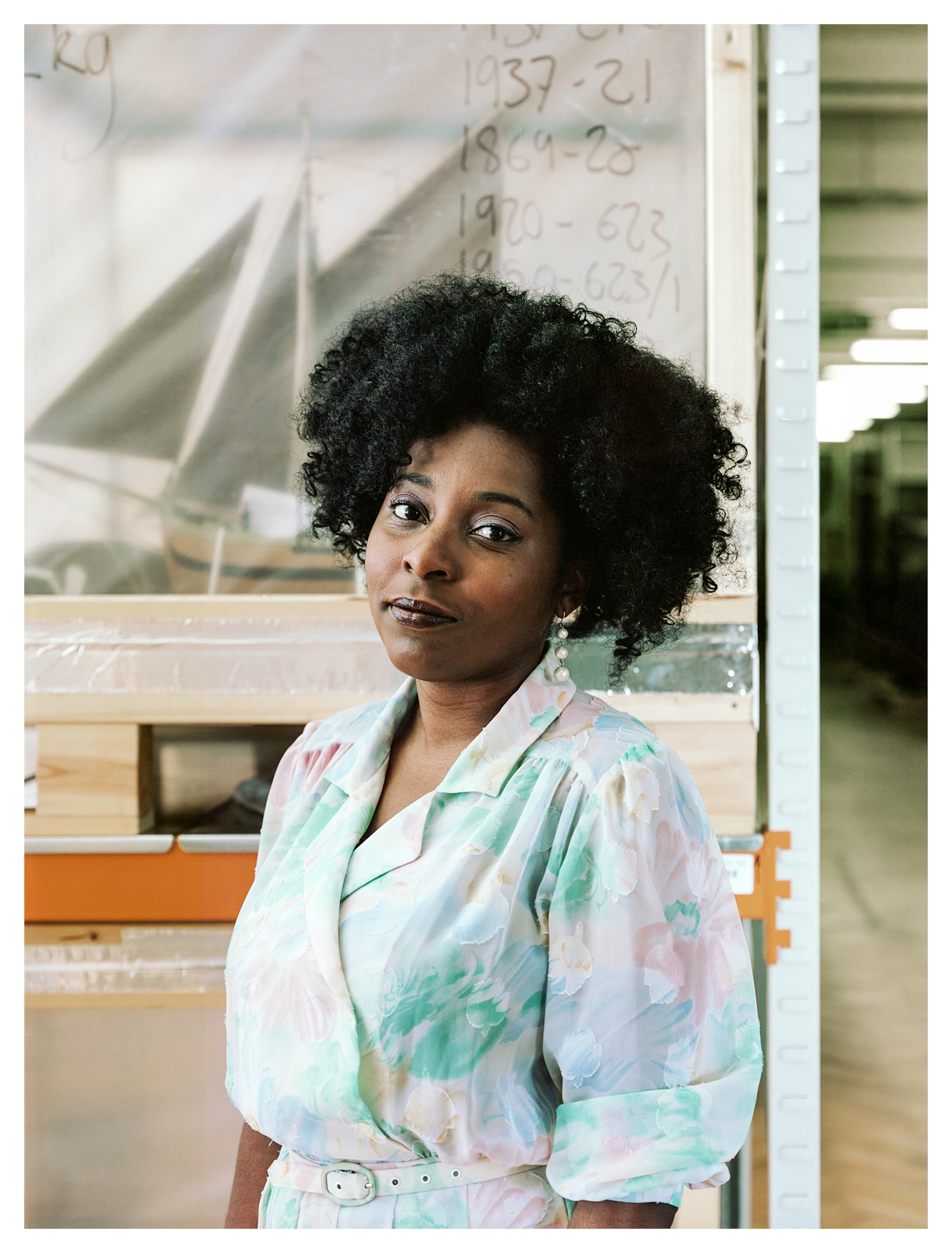
Donata, Assistant Curator, V&A (formerly Science Museum). Room S21C, ship models in the Science Museum store. 2020.
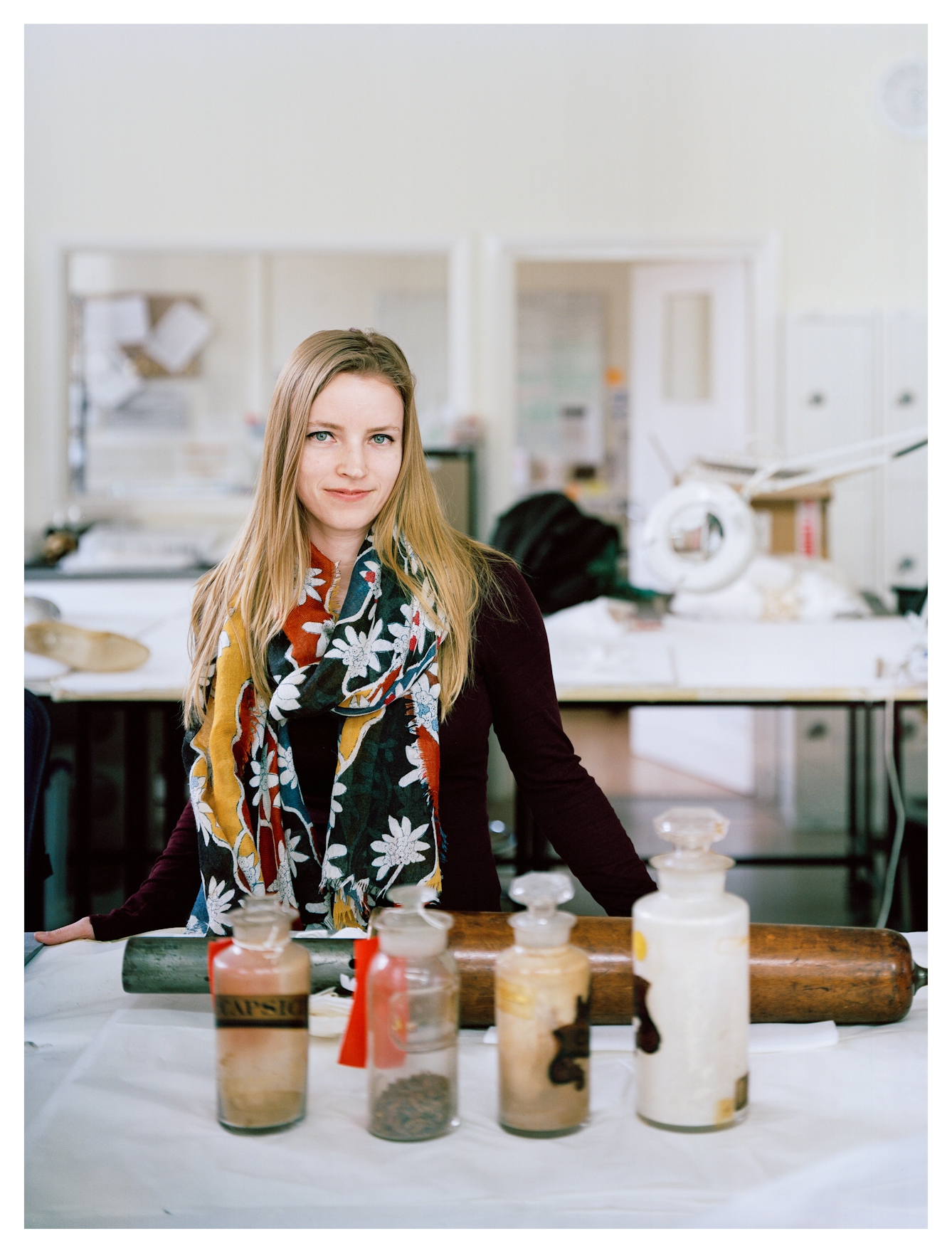
Marisa, Conservator, Science Museum. Conservation Labs. 2019.
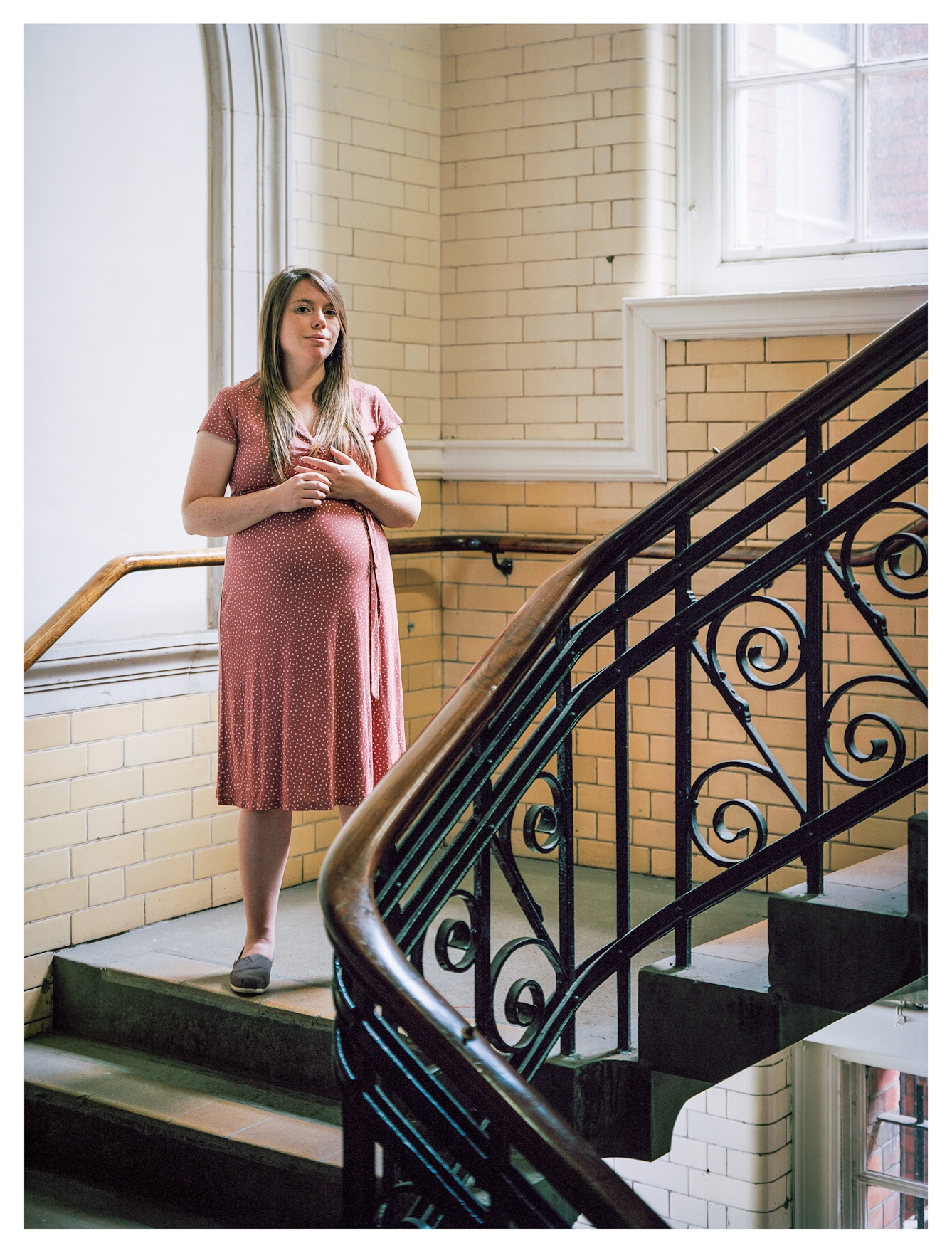
Becca, Logistics Manager, Science Museum. North-west stairwell. 2019.
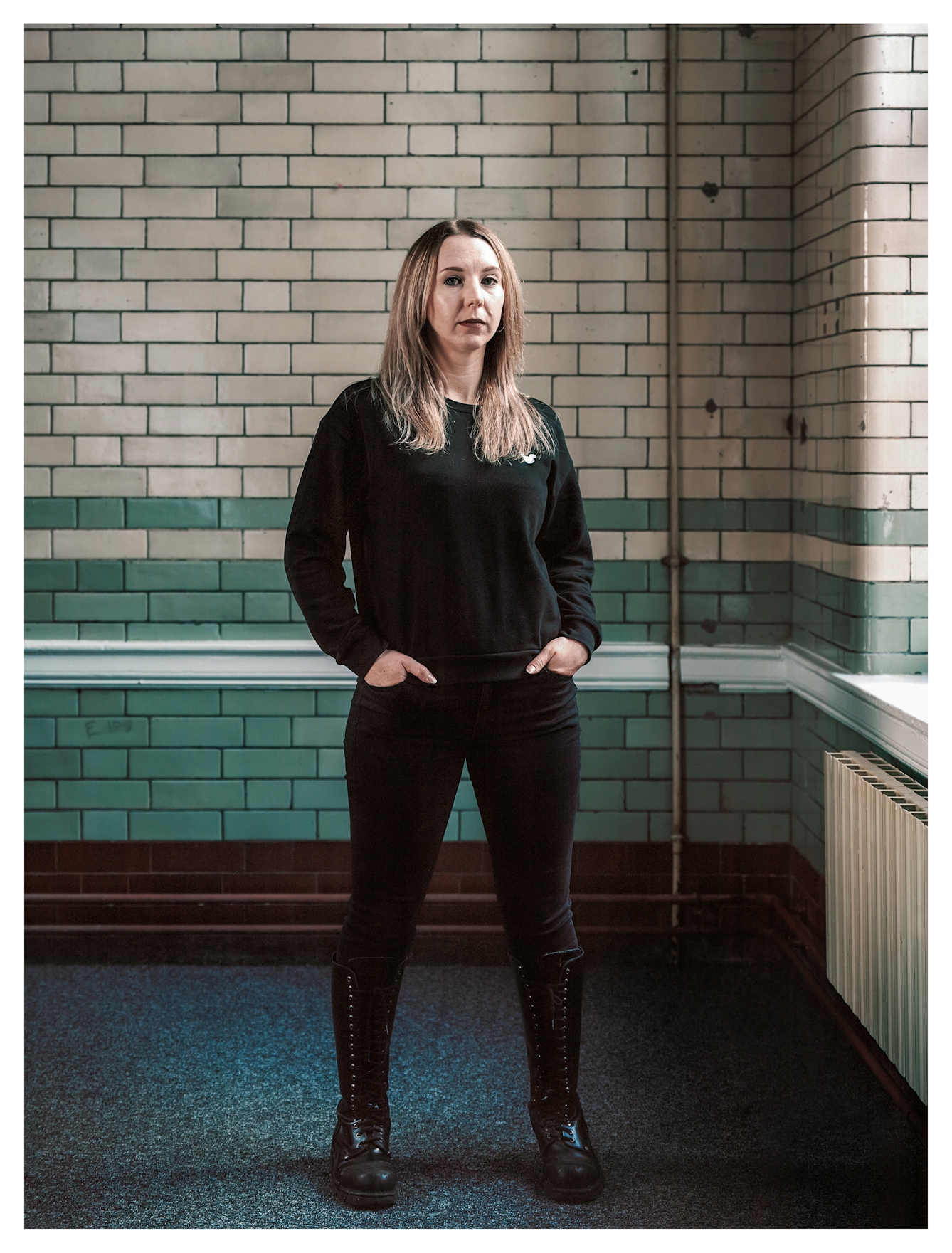
Tori, Photography Team Leader for the One Collection move project. ‘Helen Mirren’ break room. Many of the unnumbered rooms at Blythe House have been colloquially named after actors who have starred in films shot at Blythe House. 2019.
Well over 95 per cent of museum collections are in storage at any given time. That doesn’t mean they are forgotten or hidden away.
Museum stores exist across the country, and indeed, the world. Your local museum will have one; your favourite national museum probably has several. Perhaps that odd building you pass every day is one of them?
On the scent of the past
Maps of Blythe House are hard to come by – the layers of security to protect the collections within are many. Instead, museum workers tend to develop a folkloric knowledge of where to travel. The corridors are, visually, almost identical, so you come to rely on other senses, and in particular, your nose.
The mezzanine containing the mining collection is dark, with low ceilings. Full of thousands of ore samples, it smells subterranean, even though you are several storeys above ground. The computing collections smell brittle and crispy, like 50 years of disintegrating plastic. In the basement, the scent of 200 years’ worth of degrading pharmaceuticals is so overpowering that there’s a notice warning about fainting on the door.
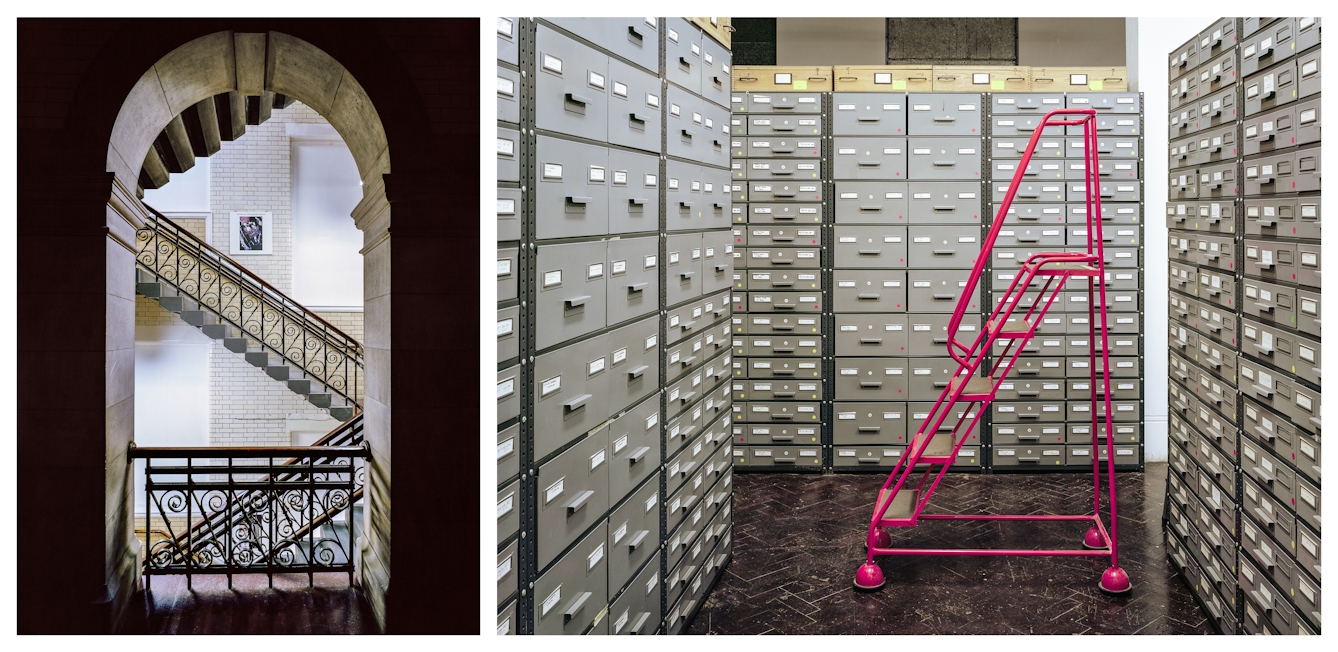
Left: South-west stairwell. 2020. Right: British Museum archeology collections. 2021.
And that one ground-floor corridor still smells like leather.
The museums are now in the process of leaving Blythe House – the government has sold it, and so the collections are going their separate ways. Millions of objects have been painstakingly checked for hazardous materials, barcoded, catalogued, photographed and packed, before being sent on their way.
I returned to the Science Museum in 2017 as part of the team managing this departure, and could not wait to have my master-key access returned to me. I saw the place in a different light this time, as a series of challenges to overcome: the uneven floors, the wildly fluctuating temperatures, the narrow gaps through which we would have to remove every last object, and the single, ancient goods lift shared between three museums who all had the same deadline.
All the museums know so much more about their collections as a result of this work. For five years we have been shaking their stories out and bringing them fresh into the light. Metaphorically, of course – we are very careful with every single one.
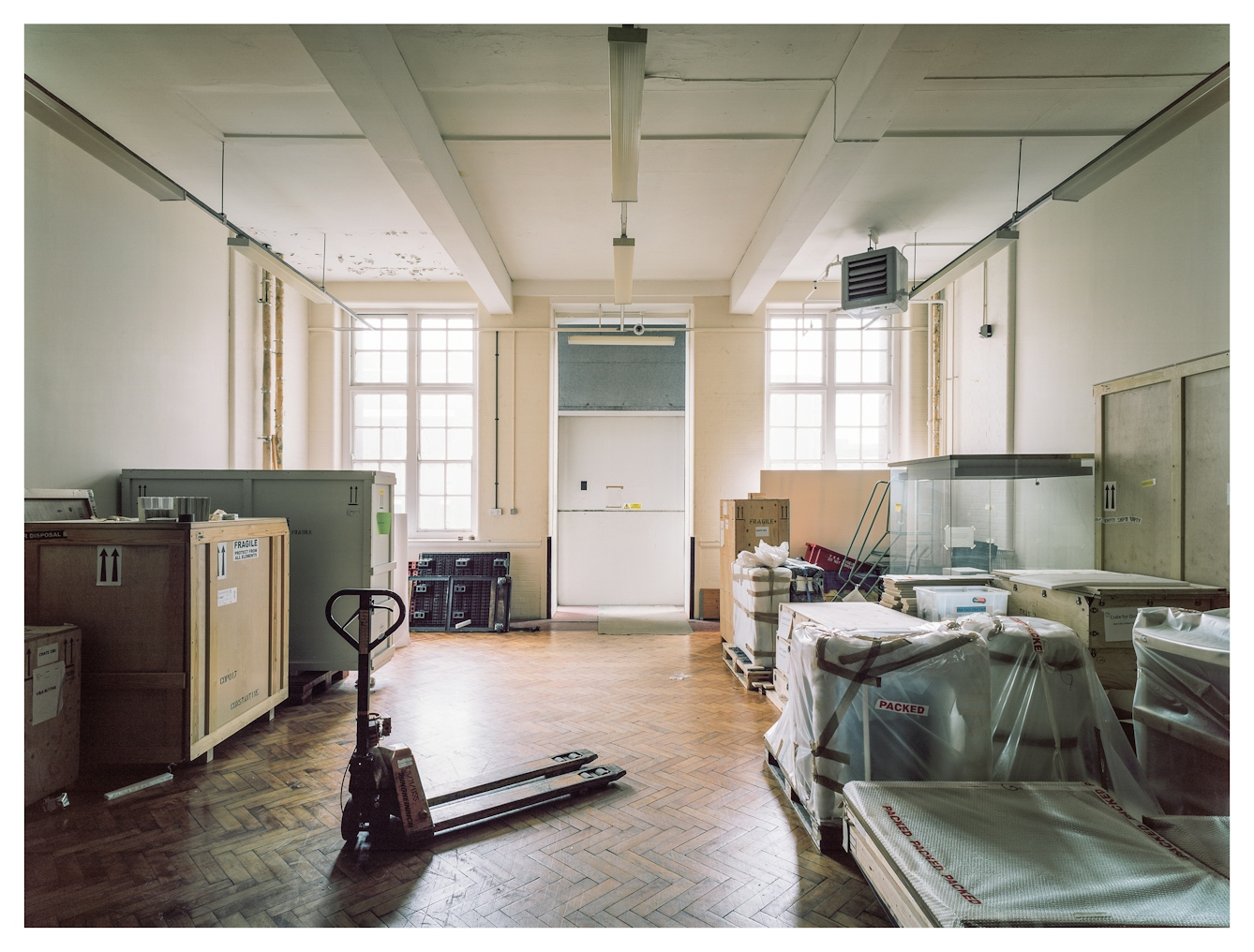
Transit room and goods lift. The only lift of this size in the entire building. 2020.
On my first day back at Blythe, I went straight to the ground-floor corridor with the leathery scent to find out if the smell had faded. I opened a door about halfway down the hall and was met with the nostalgic whoosh of an aroma I had now known for almost a decade. It’s leather and oil and old paint and tar and Brasso and sweat and heavy plastic. It is impossible to describe or to forget.
The room is full of prosthetics. Some centuries old, some modern and cutting-edge. Limbs of every type, shape, size and purpose, made for soldiers, for children, for athletes, for cooks, for roofers, for office workers. Personal, human objects, all designed so specifically for individuals who no longer need them. The unforgettable aroma, which is in the carpet and the walls and seeps out into the corridor, is the smell of all their stories.
The prosthetics are all gone now, headed to their new home in a purpose-built storage facility, where a stronger air filter awaits them. But even now, the empty room in Blythe House still feels leather-bound.
About the contributors
Laura Humphreys
Laura Humphreys is a researcher, curator and project manager who has been working with museum collections for over a decade. She has a PhD in domestic history and technology and can often be found in the company of ancient vacuum cleaners and carpet sweepers.
Kevin Percival
Kevin is a museum photographer by day and documentary photographer by night. He has slowly developed a dedicated interest in photography of place, producing a series of documentary projects. He has worked for the Science Museum, British Museum and V&A, and has exhibited his documentary work across the UK and in Europe. His last monograph, ‘Tanera (Ar Dùthaich)’, was published in 2018. Images from Blythe House will be published as a book, Memory Bank, in autumn 2023.

